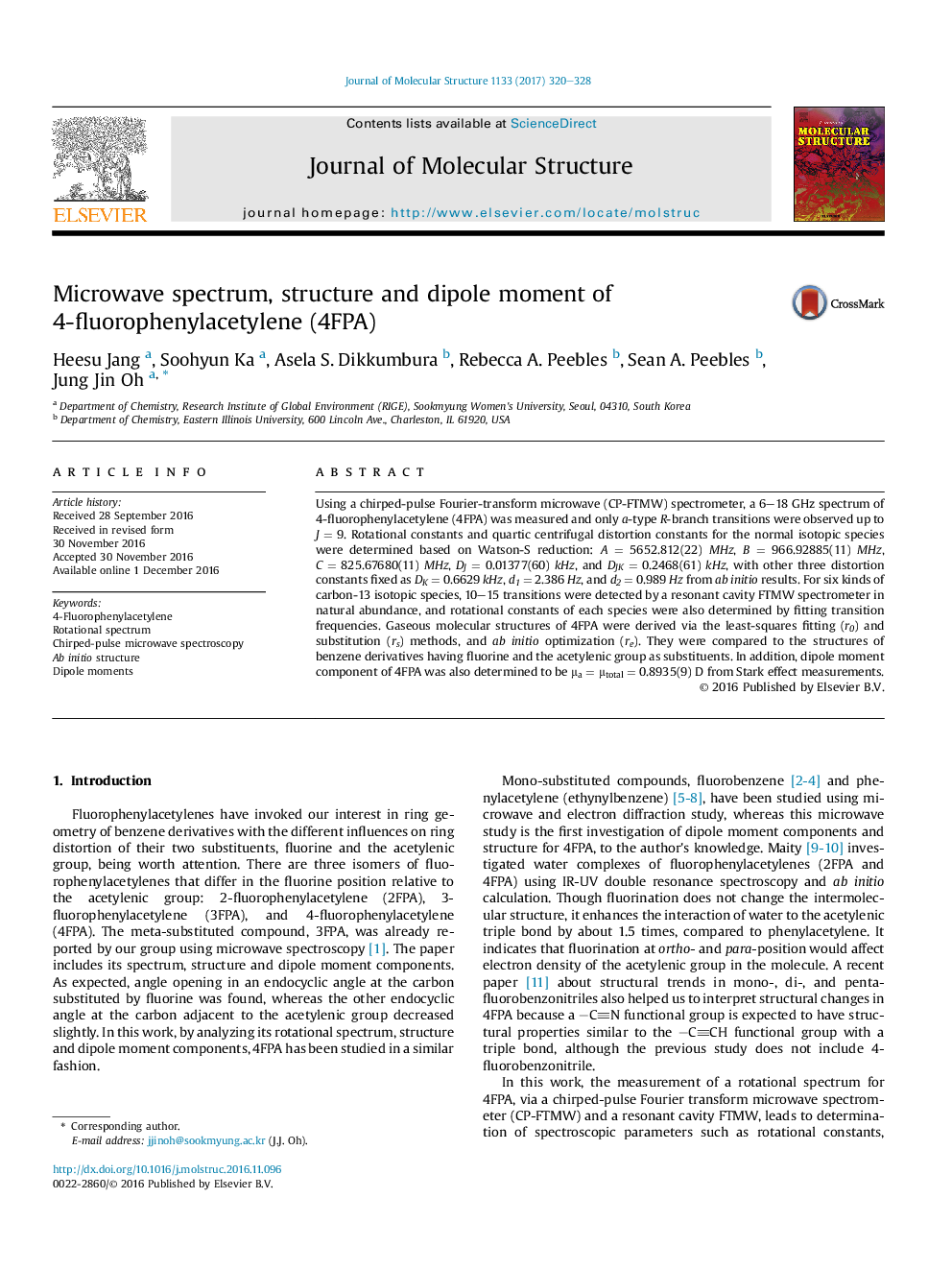| Article ID | Journal | Published Year | Pages | File Type |
|---|---|---|---|---|
| 5160912 | Journal of Molecular Structure | 2017 | 9 Pages |
Abstract
Using a chirped-pulse Fourier-transform microwave (CP-FTMW) spectrometer, a 6-18 GHz spectrum of 4-fluorophenylacetylene (4FPA) was measured and only a-type R-branch transitions were observed up to J = 9. Rotational constants and quartic centrifugal distortion constants for the normal isotopic species were determined based on Watson-S reduction: A = 5652.812(22) MHz, B = 966.92885(11) MHz, C = 825.67680(11) MHz, DJ = 0.01377(60) kHz, and DJK = 0.2468(61) kHz, with other three distortion constants fixed as DK = 0.6629 kHz, d1 = 2.386 Hz, and d2 = 0.989 Hz from ab initio results. For six kinds of carbon-13 isotopic species, 10-15 transitions were detected by a resonant cavity FTMW spectrometer in natural abundance, and rotational constants of each species were also determined by fitting transition frequencies. Gaseous molecular structures of 4FPA were derived via the least-squares fitting (r0) and substitution (rs) methods, and ab initio optimization (re). They were compared to the structures of benzene derivatives having fluorine and the acetylenic group as substituents. In addition, dipole moment component of 4FPA was also determined to be μa = μtotal = 0.8935(9) D from Stark effect measurements.
Related Topics
Physical Sciences and Engineering
Chemistry
Organic Chemistry
Authors
Heesu Jang, Soohyun Ka, Asela S. Dikkumbura, Rebecca A. Peebles, Sean A. Peebles, Jung Jin Oh,
